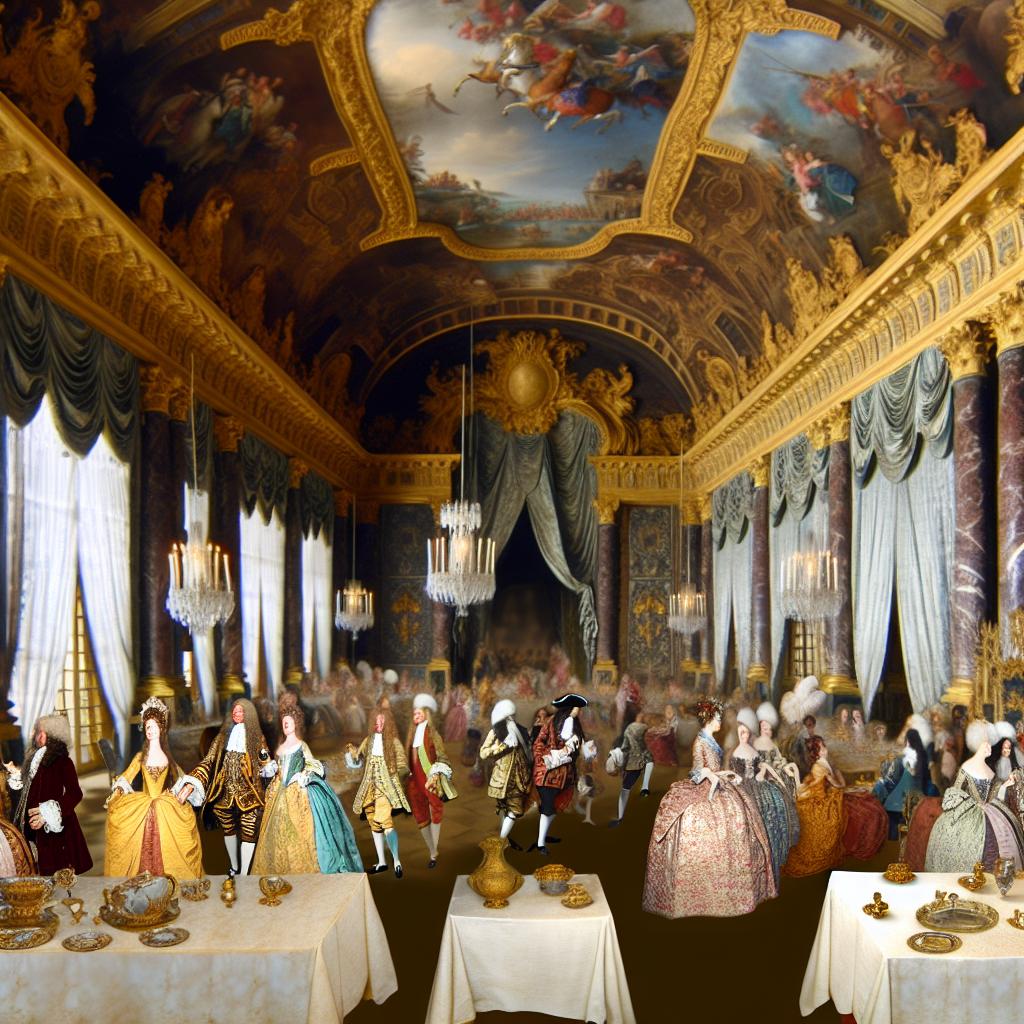Contents
The Opulent Architecture of Versailles
The Palace of Versailles, located in the region of Île-de-France, stands as a remarkable emblem of opulence and extravagance reflecting the grandeur of France during the era of Louis XIV. What began as a modest hunting lodge gradually transformed into a magnificent symbol of royal power and grandeur over the years. This architectural showcase spans an impressive 63,000 square meters, housing over 2,300 rooms, each echoing the rich history and artistry of the past.
One of the palace’s most iconic features is the Hall of Mirrors, epitomizing the splendor that characterizes Versailles. This long gallery is remarkably adorned with 357 mirrors, enhancing the space with reflections of the intricately designed chandeliers and gilded statues that line its walls. Visitors often feel transported back to the era of French royalty, walking through this emblematic hallway that served as the backdrop for numerous historical events, including royal ceremonies and diplomatic receptions.
The Expansive Gardens
The lavish lifestyle enjoyed at Versailles did not end within the confines of the palace walls; it extended outward into its expansive gardens, meticulously designed by André Le Nôtre. Encompassing around 800 hectares, the gardens are considered a masterpiece of landscaping art. They are intricately arranged with geometric flowerbeds, serene water features, and a network of pathways that invite exploration and contemplation amidst nature’s beauty.
One notable feature of these gardens is the Grand Canal, a large and serene body of water offering a picturesque setting for leisurely activities. Originally, it hosted gondola rides that evoked scenes from Venice, providing enjoyment to Louis XIV and his court. It serves as a serene spot for reflection and recreation, adding a Venetian touch to the distinctly French landscape.
The Exquisite Royal Apartments
Inside the palatial walls, the royal apartments stand as testimony to the luxurious lifestyle that was the everyday norm for its royal occupants. The King’s Grand Apartment, known as the Appartement du Roi, comprises a lavish suite of rooms used for official duties and state functions. Each room showcases intricate artwork and impeccable furnishings, reflecting the king’s illustrious tastes and the high level of craftsmanship of the time.
The Queen’s Apartment, mirroring the opulence of the King’s, demonstrated the meticulous attention to detail and decorative prowess of 17th and 18th-century artisans. With rooms designed around unique themes and elegance befitting her status, the Queen’s apartment offered a private yet splendid retreat within the confines of the bustling palace.
The Social Life and Court Rituals
Beyond its role as a royal residence, Versailles was a vibrant center of political power and social life. The court was a lively hub where nobles gathered, vying for favor and influence in the proximity of the king. Life at the palace was governed by strict protocols and rituals that structured the daily routines of its inhabitants.
Royal banquets, masquerades, and theatrical performances were common occurrences, providing entertainment while cementing Versailles’ status as a cultural epicenter. These events were avenues for showcasing finery and grandeur, with attendees donning intricate costumes amidst elaborate decor. The palace was a lively stage where social and cultural life unfolded with exuberance and flair.
Legacy and Influence
Versailles’ influence extends well beyond its original purpose as a royal residence. It has become a potent symbol of the absolute monarchy and continues to captivate with its breathtaking beauty and historical significance. Today, Versailles stands as a UNESCO World Heritage site, attracting millions of visitors each year who come to witness firsthand its historical splendor and exquisite design.
Its legacy perseveres, inspiring artists, architects, and gardeners worldwide. Modern architecture and garden design continue to draw inspiration from the innovative styles and techniques displayed at Versailles, making it a timeless repository of creativity and elegance that transcends generations.
In conclusion, the Palace of Versailles stands not only as a monument to the extravagant lifestyle of French royalty but also as an enduring symbol of architectural and artistic achievement. With its magnificent structures and beautifully crafted spaces, Versailles continues to offer a compelling glimpse into a fascinating period of history, leaving an indelible mark on those who visit its grounds. This extraordinary palace remains a celebration of design, art, and human endeavor, continuing to find resonance in the present while echoing the voices of the past.

